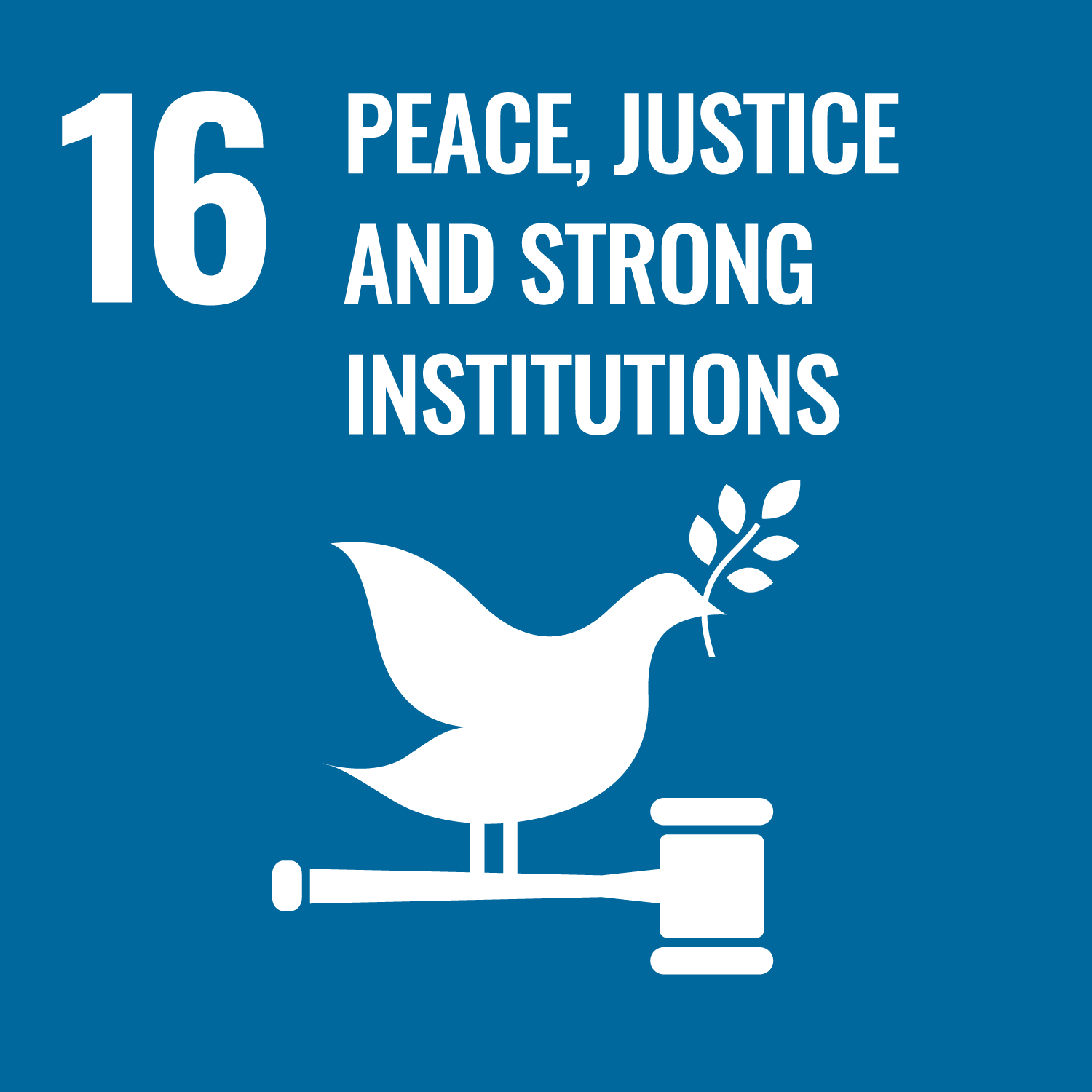Set fireside beneath a magnificent celestial tapestry, a new virtual reality experience from Griffith University’s First People’s Health Unit invites you to listen and learn hands-on about knowledge from 20,000-years ago.

Director of First People’s Health Unit, Professor James Charles.
Professor James Charles, Director of Griffith’s First People’s Health Unit (FPHU), is honouring the wisdom and work of his Elders this NAIDOC week as the voice behind the VR experience.
Improving cultural awareness is central to its design, with particular mind to health students engaging with Indigenous communities.
“It takes you back 20,000 years to my Kaurna community back home to share dreaming stories, knowledge of astronomy, stories about our survival and Kaurna culture,” Professor Charles said.
“Importantly, there’s an evidence-based part in showing our traditional medicines, therapies and treatments which you actually get to apply.”
Professor Charles said the innovation aims to help “close the gap” by better preparing graduates with the knowledge to make a real difference in Indigenous health.
“It is designed to build more empathy and respect for Indigenous knowledges and achievements of survival, but we also hope to use this modality for clinical exposure,” he said.
A recent audit into outcomes for First Nations patients identified a lack of services and culturally appropriate care was contributing to lower life expectancies and preventable deaths amongst Indigenous communities.
Professor Charles has facilitated impactful presentations on Indigenous health for years, however he hopes using the immersive technology will strengthen the awareness and skillset of students.
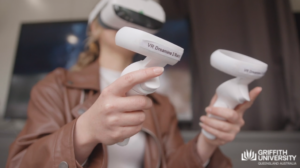
Students are invited to apply traditional medicines and therapies during the virtual reality experience.
“Students look at a lot of the teachings, they understand the histories and policies that have affected Aboriginal people, but they often ask: How do I become a better practitioner?” he said.
“The reality is we would love everyone to get the experience of working in and with Indigenous communities, but we just can’t offer that in an equitable way where everybody gets the opportunity.
“Virtually, we could potentially give that to many people and have quality assurance that students are graduating with the knowledge they really need.
“Particularly for students that we know are going to an Aboriginal Medical Service, whether for placement or as part of their graduate career goals, we want it to be a good experience.
“If they’re not prepared, things can go not so well and that’s what we don’t want — it’s not good for the patients and it’s not good for the students.”
Drawing on his own knowledge as a podiatrist and specialist in Aboriginal foot health, Professor Charles co-researched and authored a study with his 90-year-old Uncle and Kaurna Elder, Uncle Lewis O’Brien.
During the experience, users are not only exposed to actual medicines used to treat illnesses but must also apply the treatment – in one instance, a shield made of soft-bark works as a brace to help fuse shattered bone.
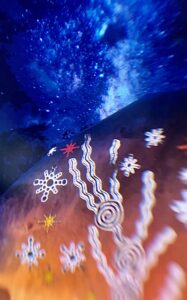
A peek inside the VR goggles where participants will hear Dreaming stories against a crackling fire.
VR participants are exposed to a real-life injury from the time, supported by evidence that shows the remarkable resourcefulness and care of the Kaurna community.
“The care of the community is incredibly important and that is the difference in survival of Aboriginal Australians compared to say, the Neanderthals,” Professor Charles said.
“Neanderthals were much more focused on individual survival.
“For my ancestors, energy and resources were put into caring for everyone, even the elders and those that might’ve had numbered days.
“To bring that to life and share it makes me so proud.
“I think it speaks volumes of who we are and what we’ve done, not just about the knowledge that’s there, but the care factor and putting others above yourself.
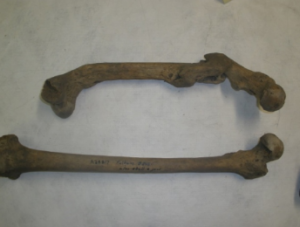
A once fractured, now fused femur bone (below) believed to have belonged to a Kaurna man who was in his 60s (an Elder); “to survive such a horrific injury would have taken an extreme level of support from the Kaurna community.” Study: https://rb.gy/jzarg
“It was the key to our survival in these particularly harsh environments tens of thousands of years ago.”
The “harsh environments” Professor Charles refers to includes evidence of extreme prolonged droughts, unprecedented bushfires, ice packs and massive dust storms that led the way to mass plant and animal extinction.
Only some survived, including members of the Kaurna clan.
“This experience, it’s not just about the Dreaming stories, but the stories of survival that led the way to learning, building and the beginning of a sophisticated culture,” Professor Charles said.
“We wanted to create something memorable, where people walk away with an experience or enlightenment rather than just being told something.
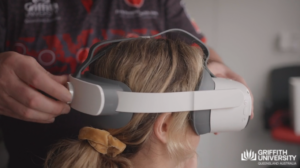
Professor Charles hopes others will feel pride from this experience, as the successes of Indigenous Elders are successes for the whole of the Nation.
“There’s a lot of negative things that can come from artificial intelligence, but I think this is one of the more positive things that you can get from AI, where we can enhance understanding, learning and interactions.”
Professor Charles and the FPHU have received much appraise from podiatry specialists having trialed the VR experience, with plans to integrate the technology into the health curriculum for students.



